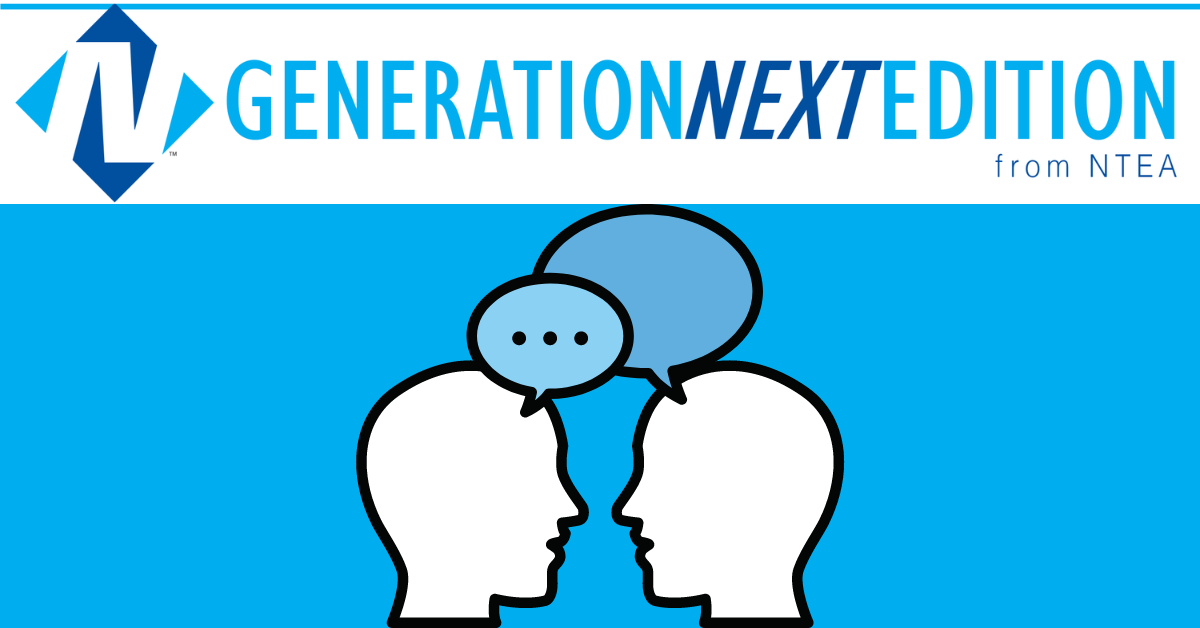
By Derek Hill (LinkedIn), governor at large, NTEA Generation Next
This article was originally published in the August 2022 issue of Generation Next Edition.
I think most of us have had challenges with communication, at one time or other. And communication comes in many forms. For the purpose of this article, I’d like to focus specifically on conversational skills.
Conversation, at its root, is to take turns speaking and listening with one or more other parties. Have you had the experience of participating in a conversation with someone and then your mind starts to wander? You might stray out of the conversation altogether and miss key components of the conversation!
This is why active listening is so important. Here are the top three active listening skills that I’ve learned in the work and home environments. These have helped me improve my conversational skills overall, as well as enhanced my role in sales.
- Separate from distraction:
Try to avoid looking at your emails, phone, or anything that triggers a notification in your line of sight while listening to someone. These temptations almost function like a real-life pop-up advertisement, and I don’t know anyone who appreciates those in the line of work.
Distractions not only convey disinterest in what your conversation partner has to say and that your mind is focused elsewhere, but they can also cause you to miss the key points from the exchange. You should make an active effort to turn away from a monitor, maintain eye contact, keep a present mindset, and focus on each word your conversation partner is saying.
- Practice active listening:
Actions often speak louder than words. What does active listening look like? It shows up as continued eye contact, or nodding / shaking your head where appropriate. It sounds like moments of affirmation when you acknowledge the speaker’s words by making short, one- or two-syllable statements to encourage the speaker to continue.
By doing this, you are communicating that you are interested in what the speaker has to say, and so you should also receive matching interest when it’s your turn to speak again.
- Provide feedback:
Following up on active listening, you should make an effort to further affirm the speaker by building off of their conversational pieces. If you find that you don’t fully understand something conveyed by the speaker, be sure to ask direct and specific questions to clarify the points; this shows that you are interested in learning more about the topic of discussion.
To demonstrate your interest or understanding of the topic, you can reiterate what the speaker said by putting it into your own words and speaking it back to him or her; this will also benefit the speaker because it shows understanding and presents opportunities for clarification while also demonstrating your active involvement in the dialogue.
Lastly, when your turn to speak comes again, you can also show your active listening skills by continuing the conversation using specific details and key points from what has already been stated. You can even use a point of interest or clarification to stem off into a new path of information that ties into the conversation. This way, your feedback shows your interest, understanding, and areas of knowledge.
These practices have developed through my line of work in sales and have helped me to not only increase productivity and management skills in my career, but have also helped me improve my overall communication skills in all facets of life.
I believe that practicing these tips can also help you increase your active listening and thus produce more fulfilling conversations in your own line of work. With this type of attention to detail, you will see the benefits for yourself as your conversations become richer and your opportunities for socialization broaden.
Learn more
Learn more about Generation Next
Join the Gen Next LinkedIn
Join the Facebook page
Board of Governors contacts